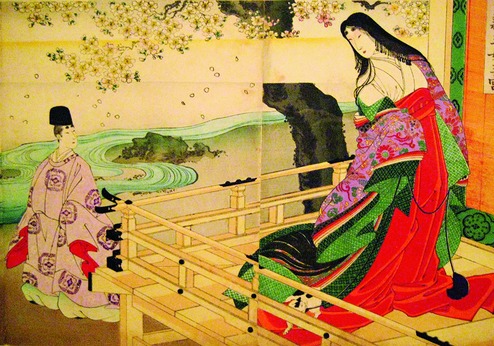
THE WRITTEN WORLD: HOW LITERATURE SHAPED HISTORY By Martin Puchner, Granta, Rs 699
If one were to go to the edX website of Harvard University, one might be able to enrol for a MOOC (massive open online course) titled 'Masterpieces of World Literature'. The course instructors are professors David Damrosch and Martin Puchner and together they take the student on a guided tour of world literature beginning with Goethe and ending with the Portuguese national epic, Os Lusíadas.
Now Puchner has written a book which substantially covers the same territory, beginning with the 'Alexander's pillow book', the Iliad, and ending, somewhat anti-climactically, at the 2014 Jaipur Literature Festival. Would it be fair to call The Written World the book of the MOOC?
Probably, but not quite. The book follows a chronological sequence from Homer to Hogwarts, while the course begins with Goethe. Why Goethe? The 11th chapter of the book takes us to Weimar in the summer of 1823, where an aspiring poet, Johann Eckermann, offers his secretarial services to Goethe, possibly the most famous living European of his time. In course of their long conversations, Goethe mooted the idea of Weltliteratur or world literature, a concept so novel that Eckermann was moved to record and publish it in 1835. In a decade's time, the phrase would be picked up by Marx and Engels and used in their Communist Manifesto of 1848.
While The Written World does not overtly espouse the idea of Weltliteratur, Puchner nevertheless tells a story of literature as a mobile, constantly mutating, entity. The portability of the book means that it can travel in both time and space, in the company of imperialists and impecunious students alike. Thus, Puchner relates the story of the Iliad as a book travelling with Alexander on his campaigns, inducing him not just to read but also to re-enact it. On the other hand, the story of Gilgamesh is one which lay buried for millennia till one Austen Henry Layard dug into the soil in Mosul and unearthed a whole city made of clay.
Most of the other pre-Christian books select themselves - the prophet Ezra's Hebrew writings, Buddha's followers committing the master's teachings to palm leaves, and the early Christians turning to parchment to give flesh to the word. Then there is the case of Socrates, who refused to write anything down. Interestingly, it is from this point in the book that Puchner's telling begins to grip the reader. The early chapters, while solidly written and researched (there are superb scholarly endnotes for nearly every other sentence), are somewhat flatly narrated, and are forced to sacrifice nuance and quirk for the grand narrative. The dying moments of Socrates are vividly dramatized, and we are invited to consider the irony that Plato - who had taken the most sedulous notes of his teacher's words - was missing at the end.
Chapters five and six consider the cases of The Tale of Genji and the One Thousand and One Nights, the first written in a society with very little contact with the outside world, while the second seeming to fly away on magic carpets from the very moment of its inception. Murasaki Shikibu's courtly novel written in Kyoto circa 1000 CE - twice as long as Don Quixote - circulated among a tiny readership, and it took nearly a thousand years for the world outside Japan to wake up to the fact that the first novel that we know of was written by a woman. Likewise, arguably the most famous stories of the Middle Ages were related by the Princess Scheherazade, or so the framing tale would have us believe. But what is interesting is the role played by paper in giving wings to the One Thousand and One Nights. While the Chinese kept papermaking one of their most well-guarded secrets, the Arab world improved on it by substituting mulberry fibres with the ubiquitous rag. While the early circulation of Nights was restricted by the relative scarcity of parchment, paper took the tales first to Damascus, Cairo and Istanbul, and then into Europe via Spain.
It took nearly six centuries for paper to travel from the Arab world to Europe, with the first paper-mill being set up in 1390 in Nuremberg. Within half a century, printing had arrived in Europe (the Chinese and Koreans had known woodblock printing for over at least five centuries) with Gutenberg of Mainz figuring out a way to print with movable metal type. The new art of printing was directly responsible for the Protestant Reformation, with its spearhead, Martin Luther, alone accounting for a third of all pamphlets printed during this period.
From this point onwards, The Written World is very much a story of the triumph of print, often at the expense of pre-print literature. Nowhere is this more violently evident than in Peru of the Spanish colonial period, where the conquistadores, in a bid to tear out Mayan culture by the roots, conducted an auto-da-fé which committed the books of the Mayas to the flame. But out of this act of bibliocide came the great Mayan epic, the Popol Vuh, written in Roman script and on Spanish paper. From this, Puchner segues into the world of Subcomandante Marcos, a Mexican who had studied the Popol Vuh and refashioned the story for his insurrection.
The rest of Puchner's book takes in Cervantes, Ben Franklin, Goethe, Marx and Engels, Derek Walcott and the West African Epic of Sunjata. And following the paper trail is the figure of the author himself, who manages to visit pretty much all the places which feature in the book. But at the end, the one image that abides is that of Anna Akhmatova who wrote, memorized and burnt her poems, and entrusted her female friends with the same responsibility. "I'd like to remember them all by name," she wrote, "But the list has been confiscated, and is nowhere to / be found."











